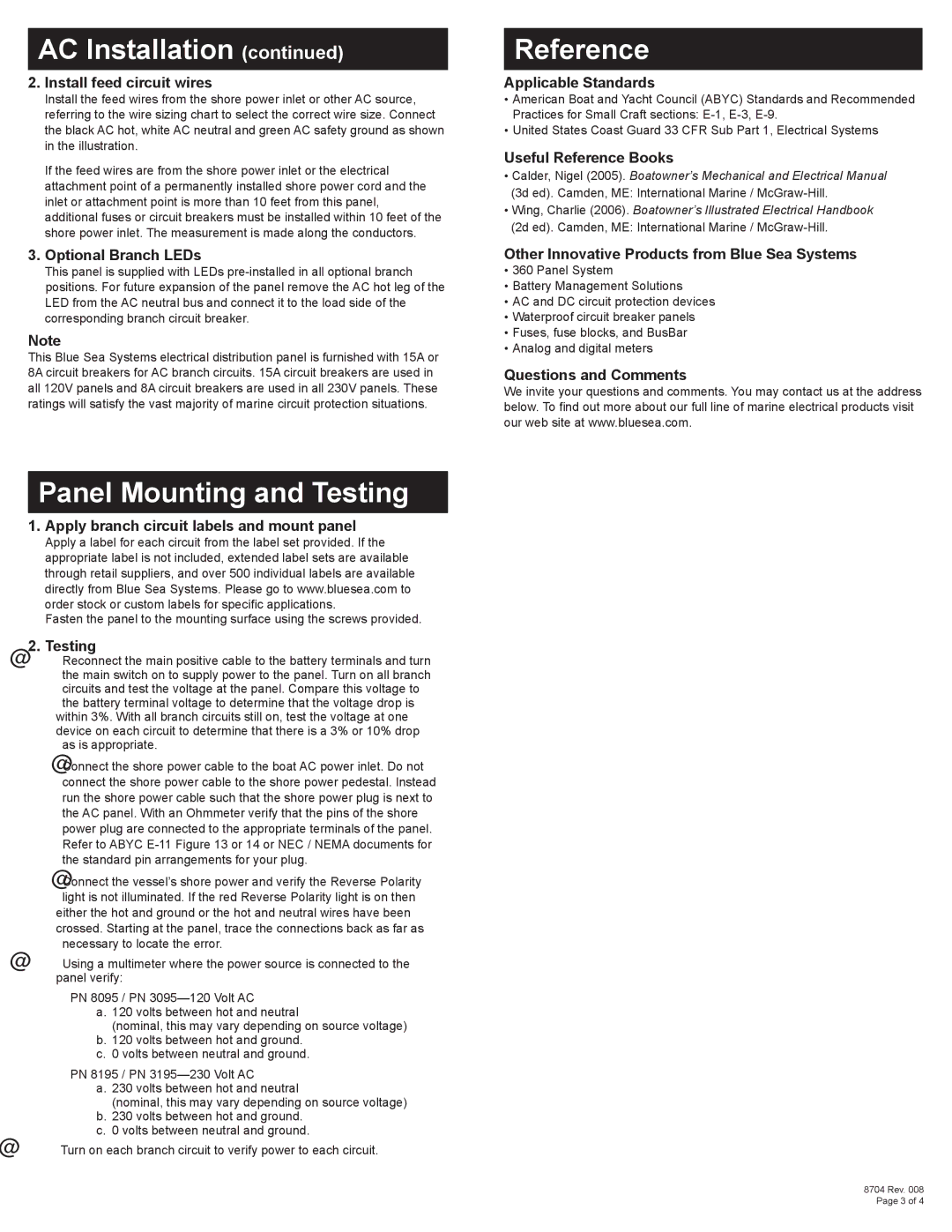PN 3195, PN 8095, PN 3095, PN 8195 specifications
Blue Sea Systems is renowned for its high-quality marine electrical products tailored for boaters, providing reliability and performance in demanding marine environments. Among their extensive product line are four specific models: PN 3195, PN 8095, PN 3095, and PN 8195. Each of these products showcases Blue Sea Systems' commitment to innovation, safety, and user functionality.The PN 3195 is a dual battery switch designed for optimal control of dual battery systems. It features a compact design and is built with durable materials, making it ideal for both powerboats and sailboats. This switch allows users to connect or disconnect batteries, ensuring that they can prioritize power usage efficiently while protecting their electrical systems. Its ergonomic handle allows for easy operation, even in tight spaces, ensuring that boating enthusiasts can manage their battery systems with convenience.
On the other hand, the PN 8095, known as the Digital Multi-Stage Battery Charger, leverages advanced technology to provide smart charging capabilities. This model specifically incorporates multi-stage charging to optimize battery life and performance. It features built-in safety mechanisms, such as over-temperature and short-circuit protection, ensuring the safety of both the battery and the vessel. The PN 8095 also boasts a user-friendly interface with LED indicators for charging status, enabling users to monitor their battery health effortlessly.
The PN 3095 serves as a 15-amp marine deck connector, uniquely designed to facilitate a robust power supply from shore to boat. This connector is built to withstand harsh marine conditions with its corrosion-resistant materials. It features a secure locking mechanism that prevents accidental disconnection and ensures a reliable power source for onboard equipment.
Lastly, the PN 8195 is a battery monitor that provides critical insights into the status of the battery system. This device provides real-time data on voltage, amp usage, and remaining capacity, offering valuable information that can avert issues caused by depleted batteries. The PN 8195 includes a user-friendly display that makes it easy to interpret the battery's status at a glance.
In summary, all four models from Blue Sea Systems—PN 3195, PN 8095, PN 3095, and PN 8195—showcase exceptional engineering tailored for the marine environment. Their features emphasize safety, efficiency, and ease of use, making them indispensable for any serious boater looking to optimize their vessel's electrical system.

